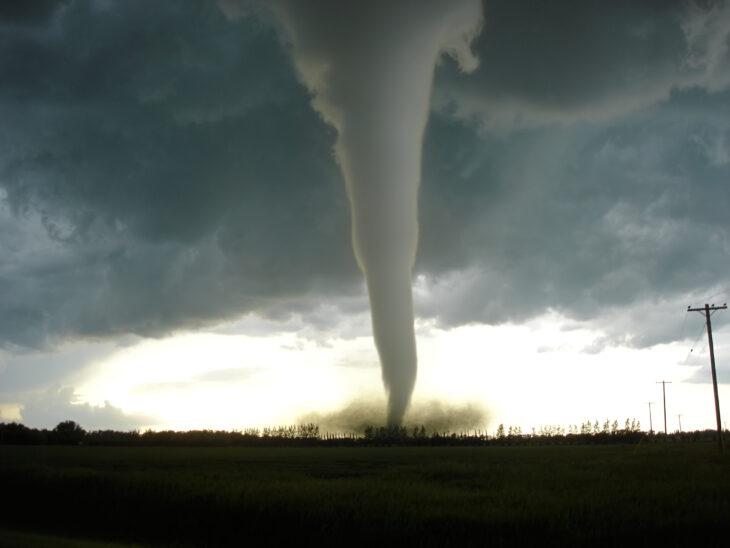Growing up in the midwestern US, tornadoes were a constant looming threat. I remember the feelings of helplessness and terror, the frenzied rush to the basement as the emergency sirens wailed. My family lost countless trees and more than one roof, but we considered ourselves lucky.
Over the past decades tornadoes have caused hundreds of deaths, thousands of injuries, and billions of dollars in damage in the US alone. With estimated wind speeds of more than 300 miles per hour, or 150 meters per second, these storms maintain some of the strongest winds on our planet. And tornadoes are on the rise. Climate researchers have found tornadoes are becoming more frequent and more intense. Scientists are studying better ways to gauge the severity of these erratic storms so we can be more prepared.
To properly assess the destructive power of tornadoes, scientists need to know their wind speeds closest to the ground. The National Weather Service uses a system called the Enhanced Fujita Scale to estimate wind speeds for tornadoes based on how much damage they caused. But scientists have shown this and other damage-based systems suffer from uncertainties since they rely on indirect observations made after the fact.
Meteorologists prefer direct measurements of tornado wind speeds, but these are rare. Researchers in the past have flown mobile radar units into emerging storms to measure wind speeds, but standard radars are usually deployed at more than 100 meters, or 328 feet, in the air. Scientists don’t know how well these high-altitude wind speed measurements reflect what’s happening closer to the ground, where most man-made structures exist. More data is needed.
To fill this gap, 2 researchers from the University of Illinois compiled wind speed data from tornadoes observed by the Doppler on Wheels (DOW) mobile radars. The DOW units are a fleet of trucks carrying radars that transmit a series of pulses that bounce off raindrops in the sky. DOW radars can track the speed and direction of winds carrying this rain by timing how long it takes the pulses to return to the radar.
The DOW radars have measured wind speeds at various altitudes in more than 250 tornadoes with different sizes and intensities since 1995, for close to 30 years. These researchers chose 73 tornadoes from the DOW database that each had wind speed measurements from more than one altitude, with at least one measurement from less than 100 meters. All but 2 of these tornadoes had wind speeds of at least 100 miles per hour, or 45 meters per second.
Since most damage from tornadoes is caused by short gusts of wind, they used the strongest, or peak, wind speeds rather than a range. They plotted peak wind speeds at different altitudes and connected the dots to produce a curve, called a wind speed profile, for each tornado. Sometimes scientists can use the shape of curves like these to extrapolate how parameters will change in areas above or below the profile, where data doesn’t yet exist.
The researchers found the wind speed profiles were all very different, but the strongest winds emerged nearest the ground in almost all tornadoes they examined. They calculated wind speeds at 15 meters (or 50 feet) were on average more than 30% stronger than wind speeds at 100 meters. The team explained this result was unexpected because peak wind speeds occur at higher altitudes in nearly all other atmospheric phenomena, like hurricanes.
The researchers concluded standard high-altitude radar measurements can vastly underestimate tornado wind speeds closer to the ground. However, they cautioned against using their wind speed profiles to directly extrapolate ground-level wind speeds, for a couple of reasons.
First, the DOW radars didn’t measure tornado wind speeds at different altitudes simultaneously, meaning none of their profiles were instantaneous. Since these researchers noted before that wind speeds in individual tornadoes can change at any moment, they could have missed the most damaging, short-lived gusts of wind, and underestimated peak wind speeds as a result.
Second, houses and other structures easily damaged by tornadoes are generally less than around 8 meters, or 25 feet, high, even lower than most available DOW data. Radar at this altitude is blocked by these same structures and trees, making it nearly impossible to obtain true ground-level wind speed measurements. Regardless of these caveats, the team suggested their data could improve estimates of how much damage low-altitude tornado winds can cause.


